«Computer of the Month” has been published on our website for almost seven years. During this time, the section went through a lot – of course, we adapted to circumstances that we could not influence in any way. So, during the mining boom, when video cards were inappropriately expensive, I offered readers both build options with the naive caption “for a quick video card upgrade,” and gaming systems with exorbitant price tags, as they say, here and now. And then everyone chose for themselves what suited them best. Last September, we launched the column in a new format: “Computer of the Month” builds were divided into categories depending on what resolution you plan to play at, and at the same time we presented options for system units ready for timely and gradual replacement their main components. So today’s special issue, to some extent, answers one very important question: what to do next with such a PC?
In general, any computer is suitable for an upgrade. Absolutely anyone. Installing another drive into the system is an upgrade; increasing the amount of RAM in your computer, too. Moreover, the listed actions do not pose any difficulty for the user—certainly for regular readers of 3DNews. It is much more interesting when the owner of a gaming PC decides to increase the performance of his system by replacing its central processor and/or video card. This is where we come across a number of nuances and subtleties that will certainly be revealed in this article. We will talk about all modern mass platforms: AMD AM4 and AM5, Intel LGA1700 and LGA1851.
There are certain unspoken rules that I always adhere to when making recommendations for Computer of the Month. All assemblies presented in this section must:
- Be fully compatible;
- Meet the described criteria and level of gaming performance;
- Work absolutely stably in all conditions – even if the system is used exclusively for games.
In this situation, increased demands are placed on PCs suitable for subsequent upgrades – naturally, this cannot but affect the price of the system unit. But in the next 2-3 years (often more, but more on that a little later), you can easily change the central and graphics chips with minimal expenses (compared to replacing the entire system unit) and physical effort (there is no need to completely sort out the components if everything prepared in advance). Sounds tempting, don’t you agree?
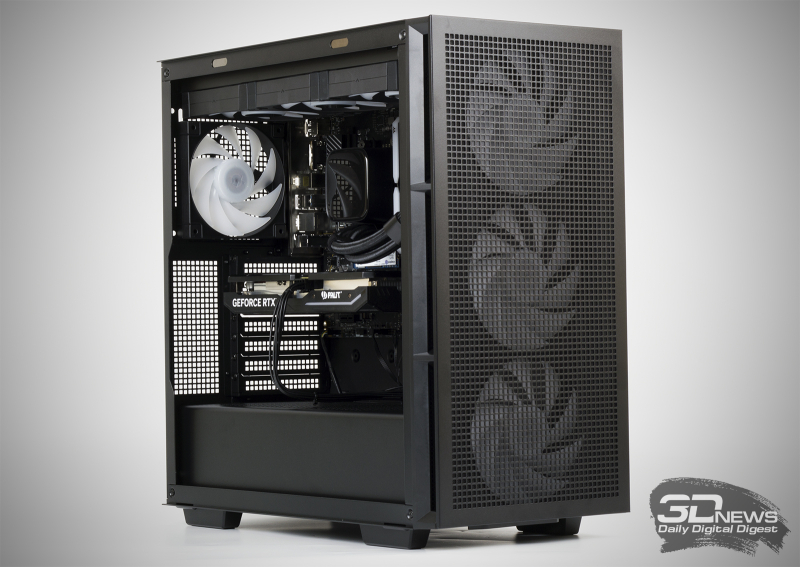
This material is replete with experiments and various tests. The main topic of the article is gaming performance and its change depending on the choice and rearrangement of components. This is how we assessed the effectiveness of upgrading various system units. The assemblies were tested in Full HD and WQHD resolutions in the following games:
- Far Cry 6. DirectX 12. Built-in benchmark. Ultra quality mode, TAA, HD textures – off, RT – off, FidelityFX – off.
- Baldur’s Gate III. DirectX 11. Walk through Baldur’s Gate. Overall graphics quality – “Ultra”, upscaling – off, 16x AF, TAA.
- Alan Wake 2. DirectX 12. A walk through Bright Falls. Rendering resolution – 100%, maximum graphics quality, SSAO, ray tracing settings – off, indirect light scattering – off.
- Cyberpunk 2077: Phantom Liberty. DirectX 12. Trip in the city. Quality mode “Impressive”, textures – “High”, RT – off, upscaling – off.
- The Witcher 3: Wild Hunt – Complete Edition. DirectX 12. Novigrad and surroundings. Graphics quality “Extraordinary+”, RT – off, TAAU, NVIDIA HairWorks – off, dynamic resolution – off, upscaling – off.
- Warhammer 40,000: Space Marine 2. DirectX 12. Mission “Loss”. Graphics quality – “High”, TAA, upscaling – off.
- Horizon Forbidden West. DirectX 12. Rattle of the Mountain. Maximum graphics quality, TAA, upscaling – off.
- RoboCop: Rogue City. DirectX 12. Walk around Detroit. Maximum graphics quality, upscaling – off.
- Black Myth: Wukong Benchmark Tool. DirectX 12. Built-in benchmark. Maximum graphics quality, TSR, frame generation – off, full ray tracing – off, anti-aliasing oversampling – 100%.
- A Plague Tale: Requiem. DirectX 12. Mission “Under a Different Sun”. Graphics settings – “Ultra”, resolution scale – 100%, DLSS – off, shadow tracing – off.
- Red Dead Redemption 2. Vulkan. Built-in benchmark (last scene). Maximum quality (advanced settings – off), TAA.
Gaming performance was determined using the CapFrameX program. It allows you to get the rendering time of each frame. The use of the 1st percentile instead of the minimum number of frames per second indicators is due to the desire to clear the results from random performance fluctuations that were provoked by reasons not directly related to the operation of the main components of the platform.
Testing was performed on the Microsoft Windows 11 24H2 operating system with all updates installed using the following driver package:
- AMD Chipset Driver 6.07.22.037;
- Intel Chipset Driver 10.1.19913.8607;
- NVIDIA GeForce 561.09 Driver.
⇡#(Useless upgrade
Quite often, “Computer of the Month” builds, designed with a subsequent upgrade in mind, are criticized for their… uselessness. They say that after some time there will be little sense in modernization – the obsolescence of hardware has not yet been canceled. Indeed, you will gain very little if you exchange the quad-core Core i5-6600K for the quad-core Core i7-7700K, and there is no longer a faster processor for the LGA1151 platform. There is no point in talking about decisions that will soon go into their second decade. However, when discussing a topic like PC upgrade, context is important. Firstly, all mainstream AMD and Intel platforms cannot be treated with the same brush. Secondly, since 2017, serious competition has emerged between AMD and Intel, forcing manufacturers to significantly increase the life cycle of their platforms. I’ll just remind you that for the AM4 ecosystem there are processors with the Zen (and Zen+), Zen 2, Zen 3 and Zen 3D V-Cache microarchitecture, and for the LGA1700 there are “stones” of the Core 12, Core 13 and Core 14 series, which are not relevant will decrease even by 2025. We have never seen such generosity from chipmakers before.
But let’s add more specifics to our conversation about the uselessness of the upgrade. Pay attention to the table below – you could have purchased one of these systems in November 2017. At that time, the option based on the LGA1151-v2 platform seemed preferable for games, but now owners of AM4 assemblies are unlikely to greatly regret their choice. In any case, both systems at that time were relevant for modern games in Full HD and WQHD resolutions using predominantly maximum graphics quality. Let me just remind you that now at a similar price you will assemble a unit with a Core i5-12400F, 32 GB of DDR4-3600 RAM and a GeForce RTX 4060 on board – this configuration is not suitable for modern games in WQHD resolution.
• ASUS PRIME B350-PLUS;
• MSI B350 GAMING PLUS;
• Gigabyte GA-AB350-GAMING 3;
•
• MSI Z370-A Pro;
• ASRock Z370 Pro4;
•
• Patriot Memory PV416G320C6K;
•
• Palit GeForce GTX 1070 Game Rock;
• Inno3D GeForce GTX 1070 Gaming OC;
•
• Western Digital WD10EZEX;
• Toshiba HDWD110UZSVA;
•
• Samsung 850 EVO MZ-75E250BW;
• SanDisk Ultra II SDSSDHII-240G-G25;
•
• ID-COOLING SE-214;
• Deepcool GAMMAXX 400;
•
• Zalman Z3 Plus Black;
• Cooler Master MasterBox 5 Lite;
•
• Thermaltake TR2 S 600W;
• Gigabyte PB500 500 W;
• Enermax MAXPRO 500 Вт;
• 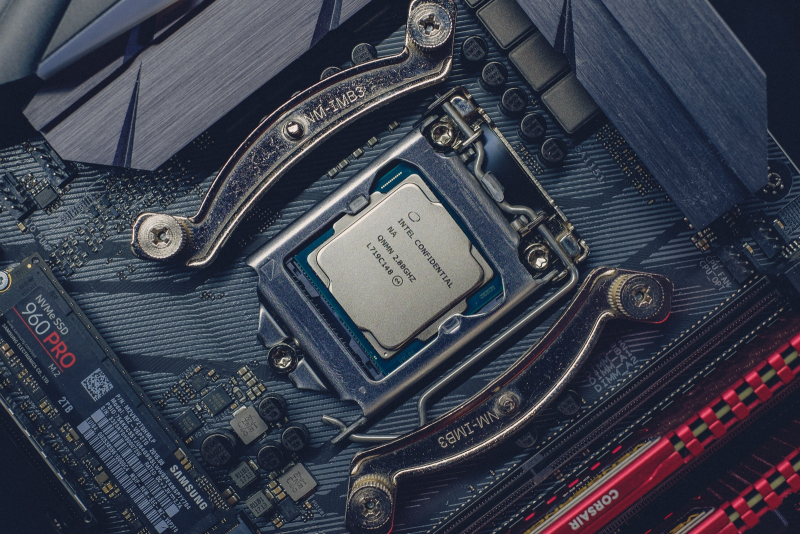
I will later devote a lot of time to the AM4 platform as part of this special issue of “Computer of the Month,” but for now let’s look at the option based on the 6-core Core i5-8400 chip – let me remind you that in those days the Core i5 series crystals did not support Hyper-multi-threading technology Threading. The fastest “stone” for the LGA1151-v2 platform is the 8-core Core i9-9900KS model – it was then that Intel introduced a series of Core i9 chips for its mass platforms, and also divided processors into models with and without integrated graphics (with the letter “F” ” in the title).
Seven years is a decent amount of time to think about replacing your system. This is the case when the transition from LGA1151-v2 to LGA1700 and AM5 will give a noticeable increase in performance both in resource-intensive tasks and in games (with a simultaneous upgrade of the video card, of course). But is everything so bad and is it possible to get by with what is called a little bloodshed?


The transition from Core i5-8400 to Core i9-9900K/KF/KS looks tempting – the latter has two more physical cores, support for Hyper-Threading, a noticeably higher clock speed and plus 7 MB of third-level cache. However, there is one problem: even after six years, Core i9 series chips are prohibitively expensive – on Avito, the Core i9-9900K costs between 17 and 20 thousand rubles. In this situation, it’s time to think about completely replacing components. In addition, the Core i9-9900K places serious demands on the motherboard’s power subsystem. The LGA1151-v2 assembly indicated in the table above is not ready for such an upgrade – it was not originally planned for 2017. It turns out that if we can’t find a central processor at a “tasty” price, all we have to do is replace the video card in the system and double the amount of RAM.
Interestingly, in 2024, the Intel CC150 central processor “surfaced” in China – this is an analogue of the Core i9-9900, whose power consumption is reduced to 65 W and Turbo Boost is disabled. As a result, the chip always runs at 3.5 GHz. The CC150 went on sale after NVIDIA massively updated its game servers. The main thing is that the chip is fully compatible with any motherboard with the LGA1151-v2 socket and today looks like a very interesting solution for upgrading the platform of the same name.
Let’s get the most out of Intel’s optimal 2017 build. Testing was carried out using the following hardware:
- Central processors Intel Core i5-8400, Intel CC150, Intel Core i9-9900K, Intel Core i5-12400F;
- ASRock Z390 Phantom Gaming 6 and ASUS B660M-A D4 motherboards;
- RAM Crucial Ballistix BL2K16G32C16U4B;
- видеокарт MSI GeForce GTX 1070 AERO, Palit GeForce RTX 3080 GAMINGPRO OC, Palit GeForce RTX 4060 DUAL и ASUS ROG STRIX 4070 Ti SUPER OC;
- Intel SSDPEKKW020T8X1 SSD;
- Power supply DEEPCOOL PX1000G;
- Maintenance-free DEEPCOOL LD360.
(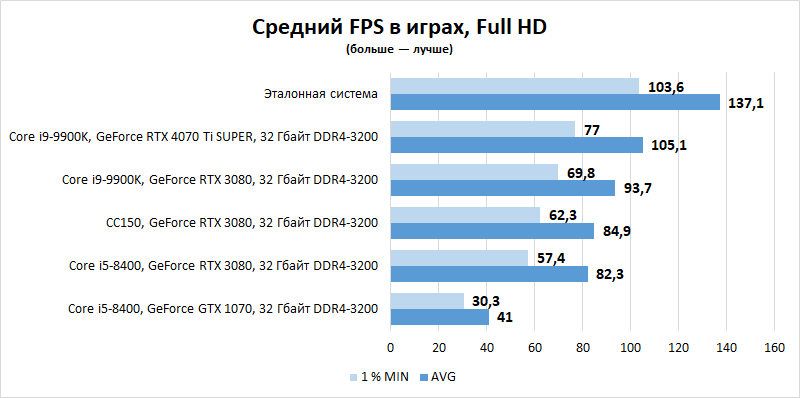
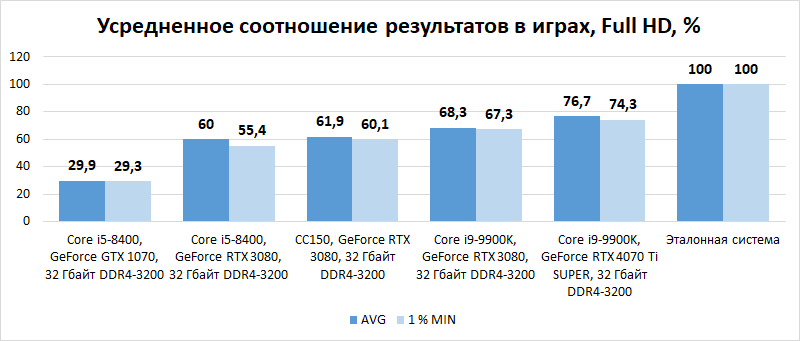
The results of the reference system are taken as 100% – a computer built on the AMD AM5 platform, which is equipped with a Ryzen 7 7800X3D processor, a set of DDR5-6400 RAM and a GeForce RTX 4070 Ti SUPER. The final arrangement is interesting, no matter how you look at it…
The old GeForce GTX 1070 is still amazing! Let me remind you that NVIDIA’s sub-flagship, using the Pascal microarchitecture, went on sale in mid-2016, but even now the device turns out to be capable of playing modern games. Of course, the maximum graphics quality (we are not talking about tracing at all) of modern AAA projects GeForce GTX 1070 frankly does not “match”, but you can easily select medium-high settings and get a comfortable FPS. Many people don’t need more. Some GeForce RTX 4060, which costs the same amount in rubles, will definitely not be famous for such survivability – even with crutches in the form of DLSS, or without.
For 34-36 thousand rubles in trusted places they sell a GeForce RTX 3080 10 GB – after mining, but serviced. Graphics cards like this are great upgrade tools for older gaming PCs. Because it’s inexpensive and not so sad if the “old lady” exhausted by mining eventually turns into a brick. But replacing the GeForce GTX 1070 with the GeForce RTX 3080 doubled the frame rate in games on average – it’s just some kind of holiday! A comfortable frame rate was obtained in The Witcher 3, and in Warhammer 40,000: Space Marine 2, and in Alan Wake 2, and in Black Myth: Wukong, and in A Plague Tale: Requiem, and in Ghost of Tsushima – almost everywhere there is a high frame rate frequency with drops of at least 40 FPS, which is very pleasing.
Interestingly, installing the CC150 doesn’t make the system much faster – 5% on average. The chip operates at a low clock frequency. It is also true that the set of games contains applications whose capabilities are entirely dependent on the power of the GPU – I would include Alan Wake 2, RoboCop: Rogue City, Black Myth: Wukong and Ghost of Tsushima among such AAA projects. On the other hand, in Cyberpunk and The Witcher, the frame rate from changing the Core i5-8400 to the CC150 changed by 39%, and in Red Dead Redemption 2 – by 31%. With a price of 5,000 rubles and low overall power consumption, I see no reason why one processor should be replaced with another.
«It doesn’t make much sense to shove a GeForce RTX 4070 Ti SUPER class video card into the LGA1151-v2 assembly. Even when using the Core i9-9900K, such a system lags behind the standard by a quarter in Full HD resolution and by 16% in WQHD. As they say, you need to look for a hat according to Senka.
(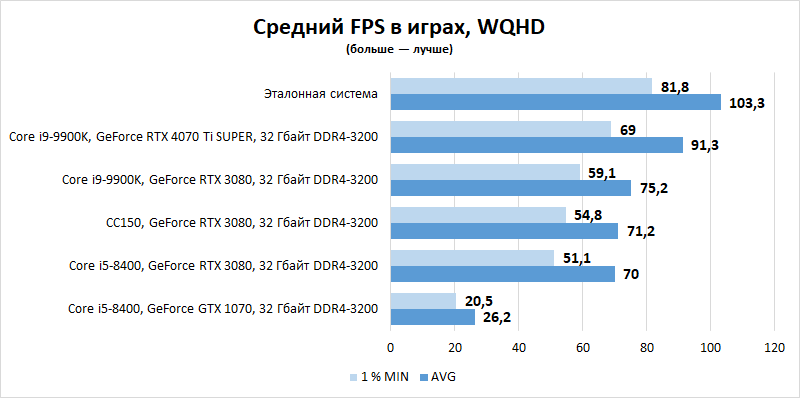
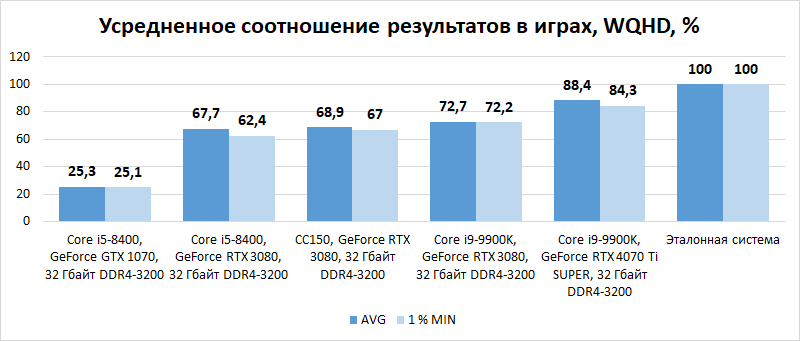
By the way, the motivation to upgrade the hardware in your PC may be the desire to try something new – for example, switch from Full HD resolution to WQHD. In this vein, replacing a video card even in a seven-year-old computer looks quite natural. The same GeForce RTX 3080 produces comfortable FPS in 11 games out of 12. Only in Black Myth: Wukong you will have to reduce the image quality or use DLSS. In general, increasing the load on the video card reduces the effect of processor dependence. We see that the difference between the Core i5-8400 and Core i9-9900K in average FPS does not exceed 5%. At the same time, 8-core chips provide a smoother picture – the difference in the minimum frame rate is on average 10%.
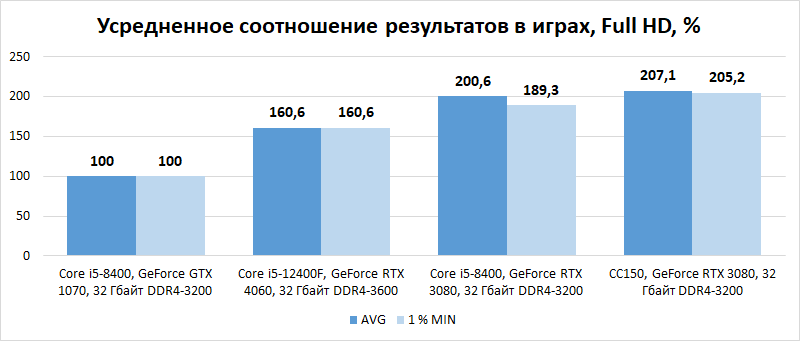
Previously, we found out that for the price of the optimal assembly of a 2017 sample, today you can assemble a new system with a Core i5-12400F, 32 GB of DDR4 RAM and a GeForce RTX 4060. This configuration turns out to be noticeably faster in modern games – by 60% on average – and in In general, it allows you to comfortably play them in Full HD resolution using maximum graphics quality, but without ray tracing. The exception was the new benchmark game Black Myth: Wukong, and even there the issue can be resolved by switching a couple of settings in the application.
Look, changing the processor to CC150 will cost us 5,000 rubles, an additional 16 GB of DDR4 RAM costs another 3,500 rubles, and a used GeForce RTX 3080 is easy to find for 35,000 rubles. It turns out that by investing approximately 40-45 thousand rubles in the assembly (half what chain stores ask for a new PC with a GeForce RTX 4060), we will get a much faster system. Do you still think the upgrade is useless?
When considering the example above, various nuances must be taken into account. For example, no one is stopping you from buying the same GeForce RTX 3080 in conjunction with the Core i5-12400F. There are often cases when a good cooler, power supply and case remain from the old system – this is a decent expense item in 2024. Finally, hardware for modern mass platforms is also actively sold on the secondary market. And yet, if I wanted to completely replace the optimal build from 2017 with a system unit that would provide a wow effect when launching my favorite and new games, I would have to invest much more money. Much.
⇡#The easiest way
As always, Computer of the Month covers several configurations. Conventionally, the budget builds are “Start”, “Basic” and “Optimal”. The variants of system units that fall into the “Advanced” and “Maximum” categories not only have a high level of performance, but also generally use higher quality components. Because in the “from 150,000 rubles” category, attempts to save some money will look like saving on matches. Well, you bought the motherboard not for 20 thousand rubles, but for 15 thousand – the assembly became cheaper by only 3%. I understand that there is a category of users who do not agree with my opinion. Counting other people’s money is the last thing. On the other hand, “Computer of the Month” is not enough to please everyone.
Example:
•
Example:
•
Example:
•
Example:
•
OR
Example:
•
Example:
•
•
The table above shows the current advanced assembly options. The components are selected in such a way that you can replace the central processor and video card and increase the capacity of storage devices without any problems or problems. The AMD assembly is begging for the Ryzen 7 9800X3D, which, according to rumors, will noticeably increase its power consumption. The Intel system is Core i7-14700KF. Both advanced assembly options are suitable for installing a video card with a power of up to 500 W. If the rumors are confirmed and the TDP level of the flagship GeForce RTX 5090 is really 600 W, then everyone who wants to join this kind of expensive toys should immediately invest in the purchase of a 1 kW power supply.
The result is simple: if you buy an expensive, high-quality system unit, you won’t have any problems with upgrading the system later.
⇡#Base
Earlier we touched on the topic of computer hardware obsolescence. However, among all the components that make up the system unit, there is a category of conditionally eternal devices. Naturally, I am exaggerating – however, a good, high-quality case, power supply and cooling system will survive more than one system upgrade. This is worth considering.
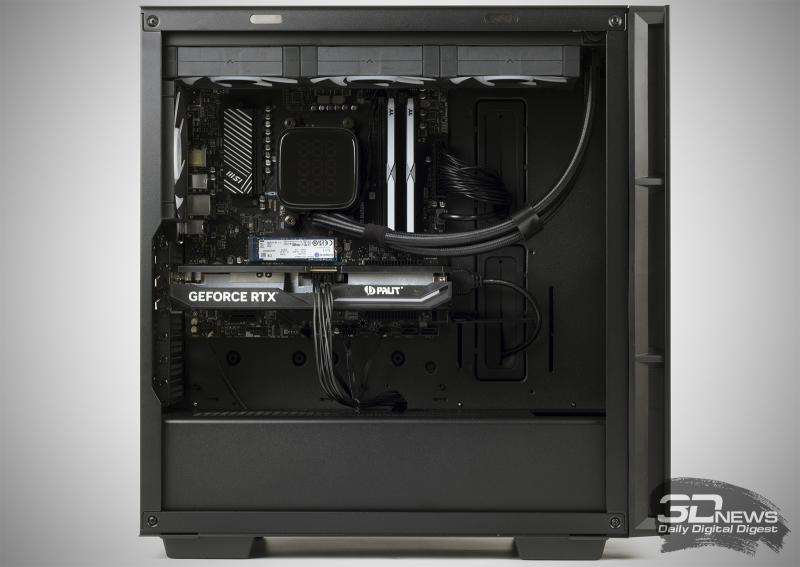
You don’t have to look far for examples: my colleague Sergei Lepilov is testing various cooling systems in a case released at the end of 2015. Perhaps, only the compatibility of coolers and liquid cooling systems with modern sockets can be terminated at a certain stage. However, manufacturers who care about their reputation are sure to produce appropriate adapters.
This material is published with the support of DEEPCOOL – for greater clarity, we have assembled a gaming system that is fully suitable for subsequent upgrades. The base configuration is a CH560 case, a PN850M power supply and a maintenance-free LD360 liquid cooling system.
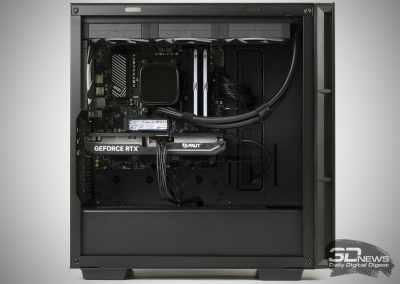
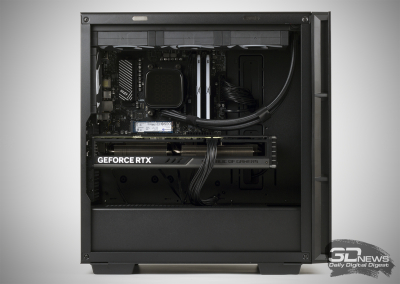
The choice of case determines a lot in your PC: you will not install hardware into the system if it simply does not fit in the system unit. And the housing is the starting point in building a competent air conditioning system and cooling components. You can read about this in detail in the articles “Computer of the month, special issue: everything about setting up a gaming PC”, “How to properly organize cooling in a gaming computer” and “Where is the best place to install a radiator for a liquid cooling system in a gaming PC”. For this special issue, we chose the DEEPCOOL CH560 model, since it can be safely recommended for assembling even the most powerful gaming systems.
The device is made in MESH design – the case is well ventilated due to three built-in 140 mm fans mounted on the front panel. Another 120mm fan is installed at the rear. Powerful video cards additionally suck in air through the side grille. You can find the DIGITAL version of the CH560 on sale – it is equipped with two digital displays located at the bottom – they display information about the temperatures and load levels of the central processor and video card. There are several ports on the top of the case, including USB Type-C.
The case is spacious: the maximum permissible length of the installed video card is 380 mm, the permissible height of the processor cooler is 175 mm, the permissible length of the power supply is 170 mm. Boards of any form factor are supported, including E-ATX. All included fans are equipped with ARGB lighting. It can be controlled either using a button on the case or after connecting the hub to the motherboard. The side wall is partially made of tempered glass, the bottom part has perforations. Magnets are used as fastening. CH560 supports the installation of the following LCS radiators: up to 360 mm in the front, up to 360 mm in the top, up to 140 mm in the rear. The case comes with a bracket to support a heavy video card. The front and top panels are equipped with dust filters, and a 26 mm high niche is provided for cable routing.
I had no problems assembling the test bench.
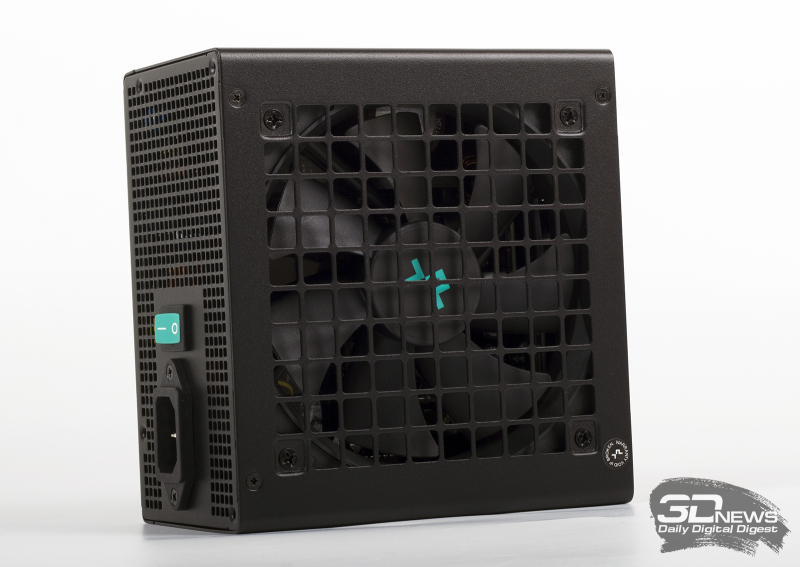
On our website there is an article “Computer of the month. Special issue: what kind of power supply is needed for a modern gaming PC” – its relevance has not diminished over time. In particular, within the framework of that material, an example of an upgrade of the LGA1700 platform, which initially used the Core i5-12400F and GeForce RTX 3060 Ti, was considered. Replacing the video card with the GeForce RTX 4090 model (with an additional 14% increase in power limit) led to the fact that the maximum load of the system unit (when the central processor and video card are loaded at 100% – in reality this turns out to be extremely difficult to achieve) increased from 360 to 500 W . The system version with Core i5-13600KF and GeForce RTX 4070 Ti consumes 570 W, and the configuration with Core i7-13700KF and GeForce RTX 4090 consumes 800 W at peak.
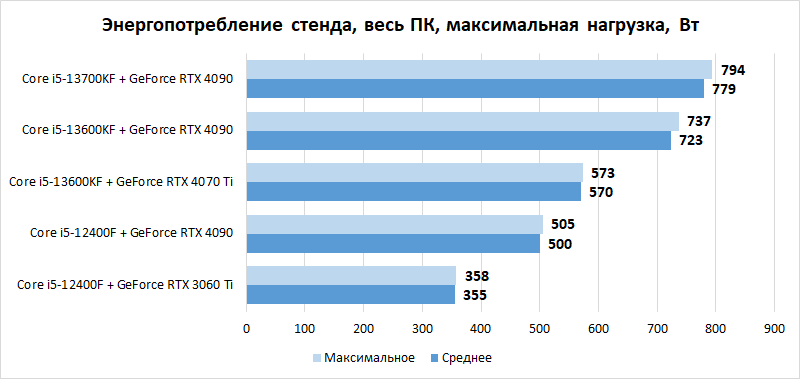
* The graph is taken from the article “Computer of the month. Special issue: what power supply is needed for a modern gaming PC.”
These are just simple examples, and the characters in the situation described may be completely different. However, in my opinion, they clearly show that there is nothing wrong with using power supplies with an honest power of 600-700 W even in budget assemblies. If you plan to upgrade your PC over time in a “full stuffing” style, you should immediately take a closer look at power supplies with a power of 850 W or more.
For example, to a model such as DEEPCOOL PN850M. The PN series has three sources with a power of 650, 750 and 850 W. In all three cases we are talking about high-quality devices. The models have received 80 PLUS Gold certification and are capable of delivering all the declared power via the 12 V line. Tests show that the efficiency of the older version at a 50% load reaches 97-99%, which corresponds to the highest category of the 80 PLUS standard – titanium. That is, the power range of 350-550 W is optimal for the 850 W model. For example, this is how much a PC with a Core i7-13700KF and a GeForce RTX 4080 SUPER on board consumes in games. Equally important, with a 12V-2×6 connector, the ATX 3.1 specification requires that the power supply can withstand short-term spikes in actual power consumption of 200% of the rated maximum.
All cables for connecting to consumers are removable. Each wire received an individual plastic braid that imitates textiles. In the finished assembly, the wires look very stylish. Just don’t forget to buy special plastic clips – we talked about the aesthetics of gaming PCs in the article “How to properly and beautifully organize cable management in a gaming computer.” Powerful NVIDIA video cards are connected using a special cable with a 12V-2×6 connector, led directly to the PSU patch panel. In addition, the PN850M boasts three wires with three PCI-E 6+2 connectors – this is enough to power the Radeon RX 7900 XTX, whose overclocking power exceeds 500 W (nominal value – 420 W). CPU power cables – two pieces, 4+4 pins each.
The power supply is equipped with a 120 mm Martech DF1202512FDHN fan on a fluid dynamic bearing. The noise of the impeller becomes noticeable only at maximum load. In other modes, the PN850M operates almost silently.
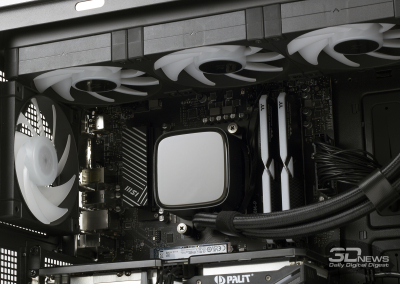
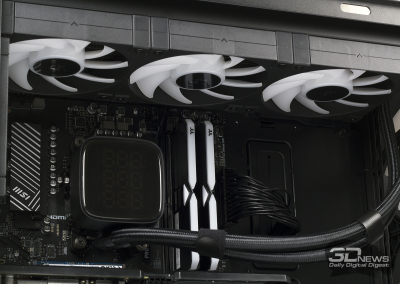
Finally, an effective cooling system means not only a cool CPU and a quiet PC right now, but also a certain margin of safety for the future. This is especially true for the LGA1700 platform and Core i7 chips, whose power consumption in work tasks exceeds 200 W.
A model like the Deepcool LD360 effectively dissipates up to 300 W of thermal energy. As you might guess, the device is based on a 360 mm radiator. The LSS is fully compatible with all modern mass platforms, including LGA1851. The kit includes three 120mm fans equipped with ARGB lighting. Installing and configuring the dropsy is incredibly simple.
The originality of the LD360 lies in the presence of an LED display located on the water block body. It displays information about the power consumption of the central processor, its temperature and load level. For the display to work, you need to connect the USB connector to the motherboard and install the DEEPCOOL DIGITAL application.
⇡#Assemblies for upgrade
Of greatest interest, including from a research point of view, is the basic assembly of the “Computer of the Month.” At the end of 2024 it looks like this.
Example:
•
Example:
•
Example:
•
Example:
•
OR
Radeon RX 7600, 8 GB GDDR6
OR
Example:
•
Example:
•
•
Today, the performance of AMD and Intel configurations is sufficient to run games in Full HD resolution using predominantly maximum graphics quality, but without ray tracing. Subsequently – after a year or two – the user can modify them as follows:
- Install Ryzen 7 5700X3D in an AM4 system;
- Get Core i5-13600KF or Core i7-13700KF for the LGA1700 platform;
- Purchase a video card with power consumption up to 300 W (GeForce RTX 5070 class).
As you can see, there are no requirements for, let’s say, an exorbitant upgrade to the basic assembly. Nevertheless, the proposed modernization steps will significantly increase the performance of systems in games in the future – in some cases we are talking about at least a twofold increase in frame rate. The evidence is given below.
⇡#AMD AM4
Let me remind you that in March 2025, the mass AM4 platform will be eight years old, but new chips and AGESA microcode updates are still being released for it. One of these days, the 6-core Ryzen 5 5600T and Ryzen 5 5600XT will go on sale – unremarkable crystals, but what is important here is the fact that AMD is not going to abandon its cult brainchild even in 2025.


When we talk about upgrading any gaming AM4 build, we mean quickly replacing the central processor with a Ryzen 7 5700X3D or Ryzen 7 5800X3D class model. The last chip has practically disappeared from sale, so we have a frankly small choice. The Ryzen 9 5900X and Ryzen 9 5950X chips are better suited for resource-intensive tasks, but they are noticeably slower in games. And so the Ryzen 7 5700X3D successfully competes with the Ryzen 7000, which also uses a more expensive platform and DDR5 memory.
Compared to their competitors, AMD platforms have an undeniable advantage: the power consumption of chips with similar performance is noticeably lower. Lower power consumption means fewer questions for the motherboard. In addition, most devices based on chipsets of the 300, 400 and 500 series received support for the same Ryzen 7 5700X3D, the main thing is to update the BIOS first.
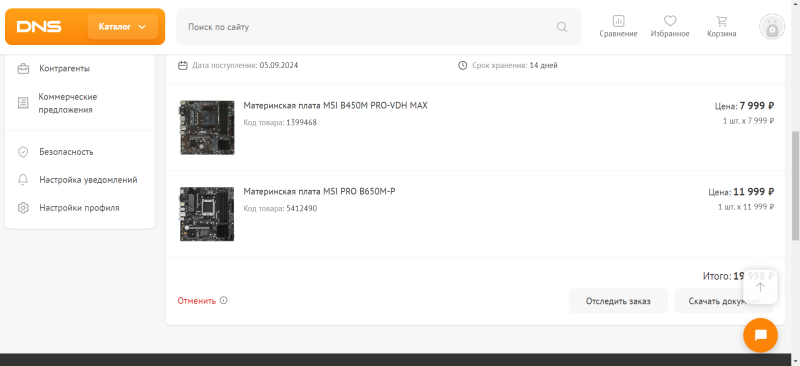
I purchased two motherboards from DNS for this article. Both devices are budget solutions in their ecosystems. Although with a number of reservations, they are suitable for subsequent upgrades and installation of 8-core X3D series chips. Even without tests, it is clear that the MSI B450M PRO-VDH MAX should not be used together with Ryzen crystals whose power consumption exceeds 120 W. The device’s power converter cannot cope with such a load. The evidence is given below.
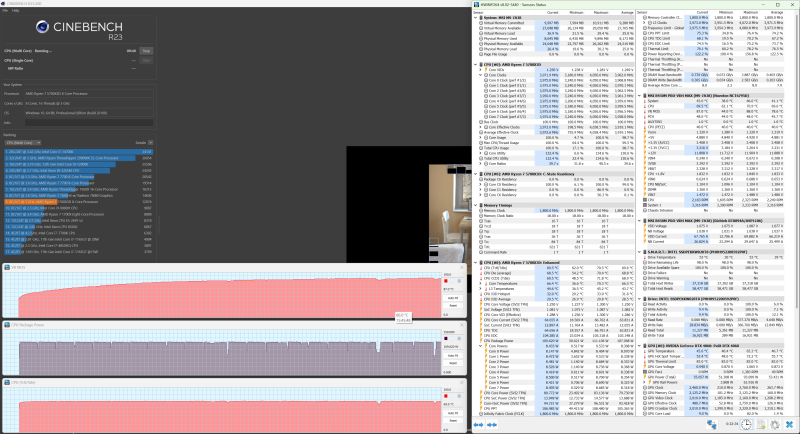
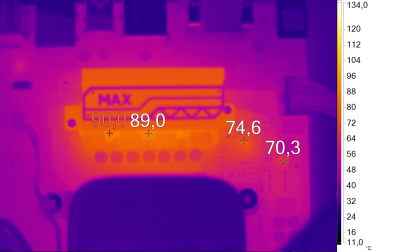
Work applications
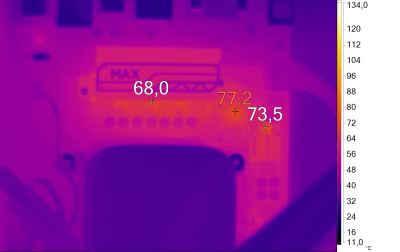
Games
In the default operating mode, the power consumption of the Ryzen 7 5700X3D remains at 110 W in work applications and 80-90 W in games when using the GeForce RTX 4070 Ti SUPER. In the first case, the system did not work stably – there was a noticeable drop in the processor clock frequency associated with reaching the maximum temperature of the power converter. In the second case, stable operation of the computer was ensured, although the heating of the VRM zone elements cannot be called low.
It must be taken into account that testing was carried out in the most severe conditions – using a maintenance-free life support system and without any additional airflow around the socket space. Using a tower cooler, as well as a MESH case with good ventilation, will reduce the heating of the power converter. That is why the MSI B450M PRO-VDH MAX works relatively stably when paired with the Ryzen 7 5700X3D. Plus, the processor itself can be configured to reduce power consumption. It makes no sense to install Ryzen 7 5800X, Ryzen 9 5900X and Ryzen 9 5950X class chips here – it’s better to choose a board with a higher-quality power converter.
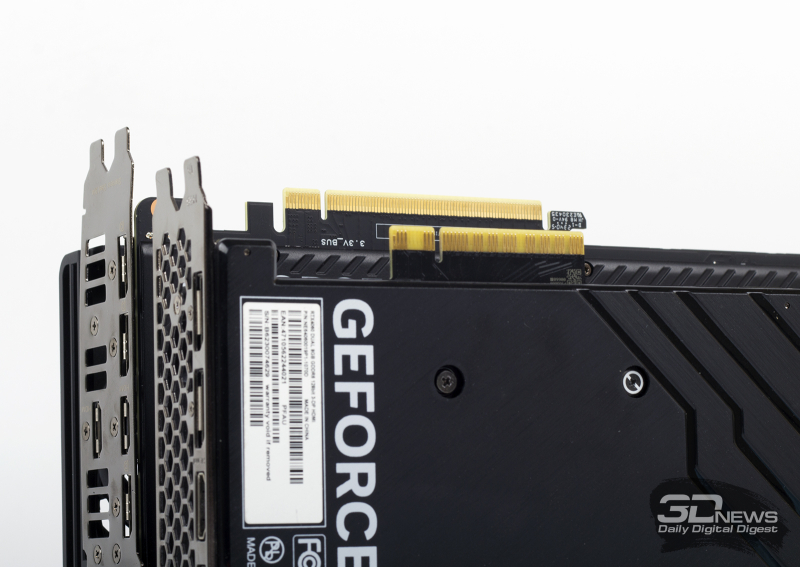
Ryzen 3000, Ryzen 4000 and Ryzen 5000 processors support the PCI Express 4.0 data transfer standard. At the same time, motherboards based on 300 and 400 series chipsets operate only in PCI Express 3.0 mode. This discrepancy can reduce the gaming performance of the assembly, because modern video cards support the PCI Express 4.0 standard, and GeForce RTX 50 series adapters are rumored to switch to PCI Express 5.0. In addition, AMD and NVIDIA have adopted the fashion of shredding their Middle-end accelerators from scratch. For example, the GeForce RTX 4060 operates in PCI Express x8 4.0 mode instead of standard x16. Consequently, the MSI B450M PRO-VDH MAX will completely limit the bandwidth to PCI Express x8 3.0 – it will drop from 16 to 8 GB/s. Let’s see how the performance of AM4 assemblies changes depending on the motherboard used. Testing was carried out using the following equipment:
- AMD Ryzen 7 5700X3D and AMD Ryzen 5 3600 central processors;
- Motherboards MSI B450M PRO-VDH MAX and ASUS TUF Gaming B550M-PLUS (Wi-Fi);
- RAM Crucial Ballistix BL2K16G32C16U4B (in DDR4-3600 mode (16-18-18-36));
- Palit GeForce RTX 4060 DUAL and ASUS ROG STRIX 4070 Ti SUPER OC video cards;
- Intel SSDPEKKW020T8X1 SSD;
- Power supply DEEPCOOL PX1000G;
- Maintenance-free DEEPCOOL LD360.
(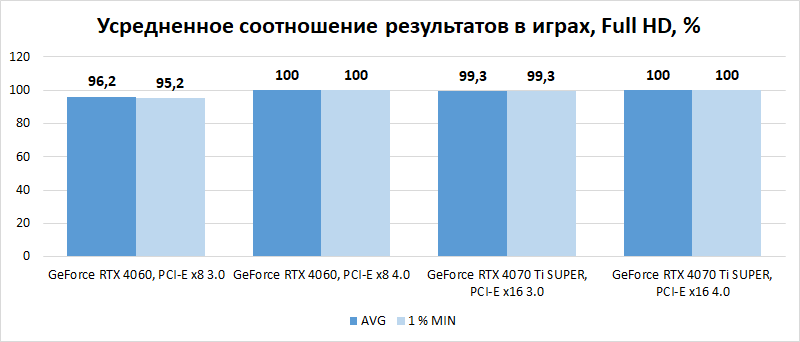
(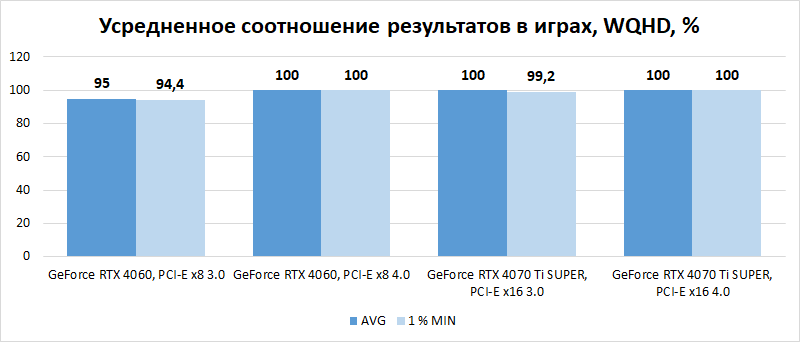
To be honest, it is difficult to comment further on the results obtained. You can see for yourself that the difference in gaming performance of the same video cards connected to different PCI Express standards tends to zero. Perhaps only in Horizon Forbidden West there is a serious drop in FPS when using the GeForce RTX 4060: by 29% in Full HD resolution and by 45% in WQHD. Fans of this game can be recommended to purchase the Arc A770 or GeForce RTX 3060 Ti instead of the GeForce RTX 4060 – the latter is still easy to find on sale.
Finally, don’t be afraid to install fast, modern graphics adapters with a full set of lanes in builds with PCI Express 3.0.
Now let’s see how the basic AMD assembly will change after the upgrade. For comparison, I used the Ryzen 5 3600 processor – it was repeatedly recommended in the “Computer of the Month”. The use of GeForce RTX 4070 Ti SUPER is also not accidental. If some of the information regarding the new GeForce RTX 5070 is confirmed, then it will be possible to put an equal sign between these models.
(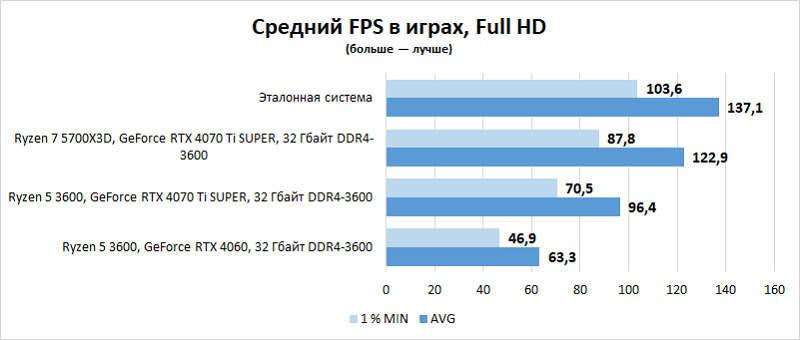
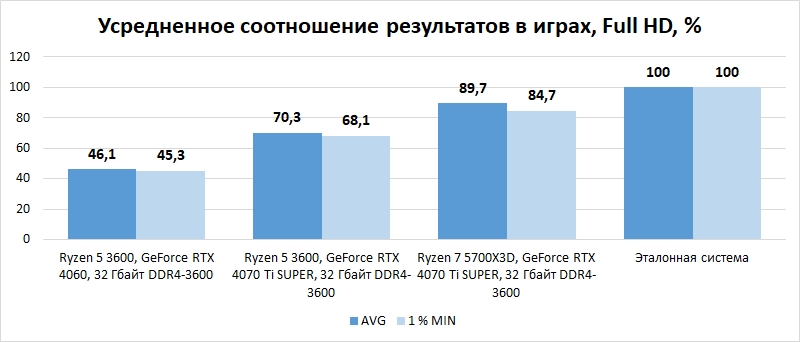
The results of the reference system are taken as 100% – a computer built on the AMD AM5 platform, which is equipped with a Ryzen 7 7800X3D processor, a set of DDR5-6400 RAM and a GeForce RTX 4070 Ti SUPER.
Let’s count the money: buying a full set of components for a reference assembly today is a guaranteed waste of 170-200 thousand rubles. These are the realities, and it is unlikely that computer hardware will become cheaper in the foreseeable future. In the meantime, PC owners who did not skimp on components 5-7 years ago can easily assemble a system no worse. The computer version with the Ryzen 7 5700X3D is inferior to the reference configuration by 10-15% in Full HD resolution and 5-9% in WQHD. The difference is small, and with the release of new demanding games it will only decrease.
(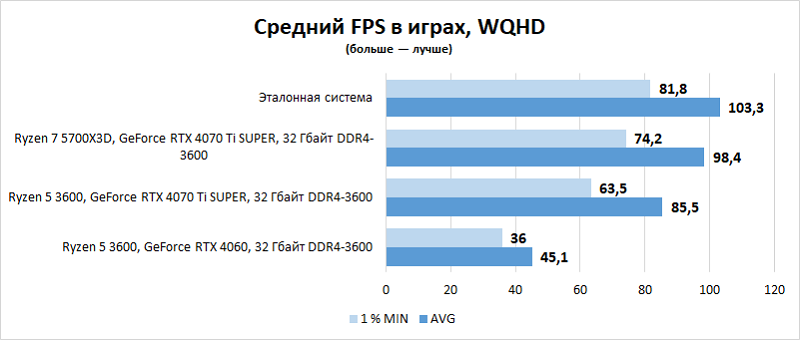
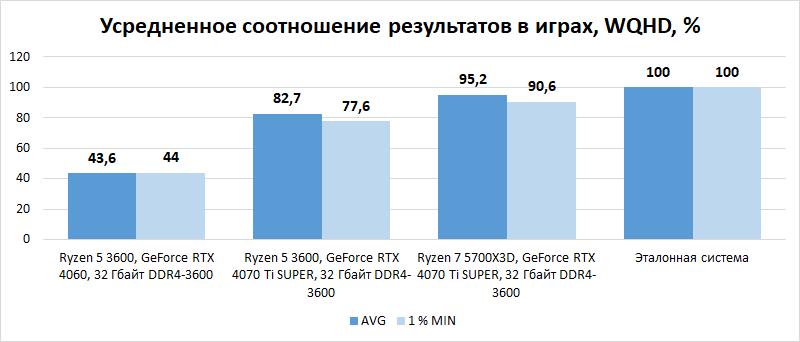
⇡#Intel LGA1700
This article was written on the day the new Core Ultra 200 processors and the mass Intel LGA1851 platform went on sale. In “Computer of the Month” issues, I have repeatedly said that you shouldn’t expect a wow effect from Arrow Lake generation chips, but the results of the flagship models in games disappointed even me. Thus, the Core i7-13700KF turns out to be faster than all three flagship chips: Core Ultra 9 285K, Core Ultra 7 265K and Core Ultra 5 245K…
As you know, for some a glass 50% full is half empty, and for others it is half full. The controversial Core Ultra 200 makes it clear that the LGA1700 platform will be relevant for a long time. In addition, we are talking about hybrid systems that support both DDR4 and DDR5 memory. It turns out that those users who update their systems in the next couple of years will not lose at all in gaming performance – Intel will probably have something noticeably faster no earlier than 2026. AMD does too.
Why am I so clingy to the Core i7-13700KF, when there is a faster Core i7-14700KF on sale? In the summer, a large comparative test of processors for 35-40 thousand rubles was published on our website – we were guided by prices in large domestic chain stores and on marketplaces. The list of chips that met our criteria turned out to be impressive: it included the 16-core Ryzen 9 5950X, 8-core Ryzen 7 7800X3D, 12-core Ryzen 9 7900X, 8-core Ryzen 7 8700G, 16-core Core i9-12900K, 16-core nuclear Core i7-13700K and 20-core Core i7-14700K. The testing covered three mainstream platforms, and in general the list can be supplemented with models with similar characteristics – for example, versions of KF chips for LGA1700. Tests were carried out with DDR4-3600 and DDR5-6400 memory kits; The stand used a GeForce RTX 4090 video card. In resource-intensive applications, the Core i7-14700K became the best processor – the design with 20 cores was first everywhere, with the exception of Topaz Video AI 4.0.3, which uses AVX-512 instructions, and 7-zip. The Core i7-13700K, which offers an 8P+8E nuclear formula, was 10% slower but 11% faster than the Core i9-12900K. At the same time, the Ryzen 9 7900X was more than 40% ahead of the Ryzen 7 7800X3D.
In games in Full HD resolution, we got the following picture, taking into account the fact that the results of the Core i9-12900K are taken as 100%: the Ryzen 9 7900X, Ryzen 7 8700G and Ryzen 9 5950X scored 93, 82 and 75%; for the Ryzen 7 7800X3D, Core i7-13700K and Core i7-14700K – 106, 109 and 112%, respectively. In Ultra HD resolution, the group of chips noticeably aligns. Only the Ryzen 7 8700G and Ryzen 9 5950X fall out of the peloton, and even then not in all games. Thus, in Cyberpunk 2077, the 8-core AMD lags behind the Core i7-14700K by 23%, and in Baldur’s Gate III – by 27%. On average, the Ryzen 9 5950X and Ryzen 7 8700G are 15% behind the test leaders, even at high resolution.
According to my colleague Ilya, among the tested models, only two chips were worthy of attention: Core i7-14700K and Ryzen 7 7800X3D. The first is good both in games and in work applications, but places serious demands on the cooling system, case and power subsystem of the motherboard. The second is practically not inferior to its competitor in games, does not require a board with a fancy VRM circuit and a monstrous cooler. However, for resource-intensive applications, the Ryzen 9 7900X, Ryzen 9 7950X and analogues of the 9000 series are better suited. In my opinion, if you are building a PC that you will mainly play on, then calmly take the Ryzen 7 7800X3D or Core i7-13700KF. The latter is inferior to the Core i7-14700KF in games by only 3% in Full HD resolution, but has a number of advantages. For example, the older model has more serious requirements for cooling the system unit. By default, the chip’s power limit is set at 253 W. At full load, the frequency of the P-cores of the test sample processor remains at 5.2 GHz, and the E-cores – 4.3 GHz. When restrictions PL1 and PL2 are removed, the frequency of the P-cores increases to 5.5 GHz, and power consumption reaches 300 W in the Cinebench R23 application – not every maintenance-free cooling system can cope with such a load. The energy consumption of the same Core i7-13700KF under similar conditions falls within the 240-W range.
The Core i7-13700K(F) has another advantage that may come into play if you buy this chip over time: the likelihood of getting a problem processor is much lower than with the Core i7-14700K(F). As you know, in the second half of 2023 the question was raised about the stable operation of 13th and 14th generation Core processors – this applies to all chips whose power consumption level exceeds 65 W. The most common problems encountered by owners of Core i9 series models. Updating the microcode solved this problem, but degraded “stones” that are already faulty and unstable cannot be cured. It is better to exchange them under warranty if possible.
I hope it’s now clear why, in the case of an upgrade of the base Intel assembly, the bet is placed on processors of the Core i5-13600K(F) and Core i7-13700K(F) level.
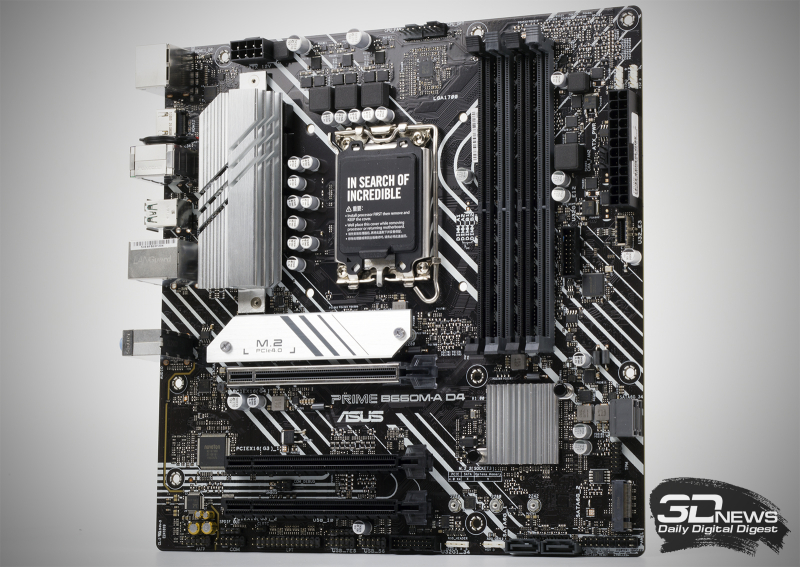
Energy consumption of the Core i5-13600K(F) in work applications reaches 160 W, Core i7-13700K(F) – 240 W. Both processors place serious demands on the choice of motherboard. Many devices for the LGA1700 platform are simply not able to operate stably in such conditions. At the same time, buying a good Intel board for an upgrade is expensive. The photo above shows ASUS PRIME B660M-A D4. In “Computer of the Month” builds, I often recommend the PRIME B660M-K D4 paired with a Core i5-12400F. Both boards have a similar power converter, operating according to the 6+1+1 scheme.
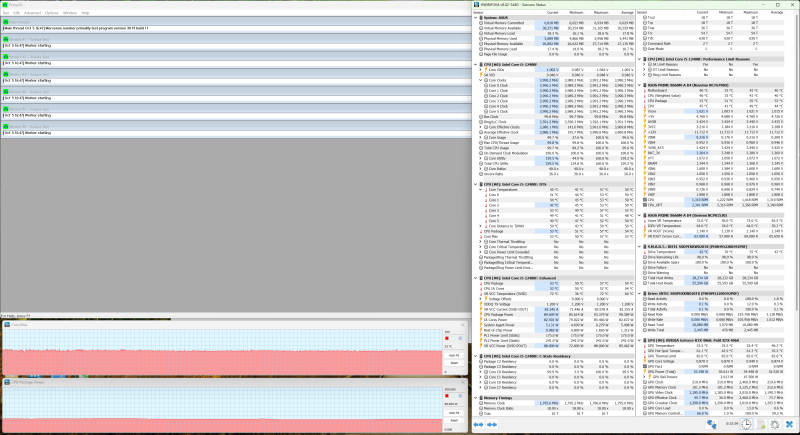
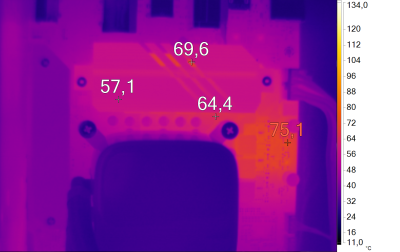
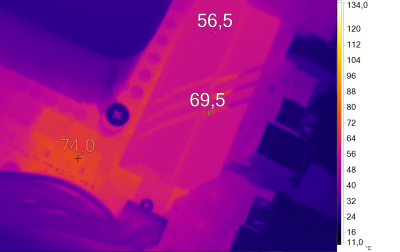
In nominal mode, the Core i5-12400F consumes about 90 W in work applications – the same as the Ryzen 7 5700X3D and Ryzen 7 7700, for example. We see that the PRIME B660M-A D4 copes with a 6-core Intel chip without any problems, but in the same CINEBENCH R23 the power converter heats up noticeably – up to 75 degrees without any airflow around the socket space. Installing the same Core i5-13400F into the assembly is a controversial idea, because its power consumption under the same conditions already reaches 110 W. There is no point in even mentioning the stable operation of the Core i5-13600K(F) and Core i7-13700K(F).
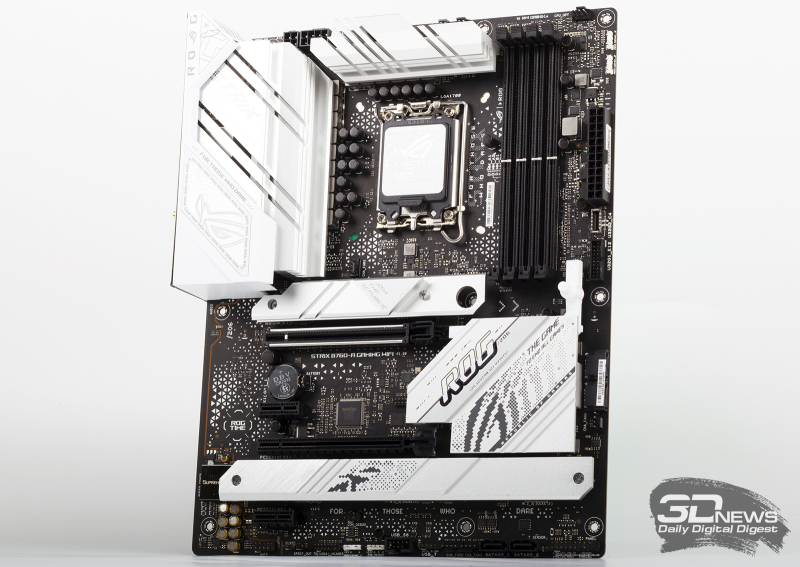
The attractiveness of a particular platform in the price-gaming performance coordinate system depends on the availability and variety of motherboards and central processors. There are currently three mainstream platforms that support DDR5. The LGA1700 platform for Intel Core chips of the 12th, 13th and 14th generations is hybrid. We discussed its capabilities in detail in the article “Computer of the Month, Special Issue. The end of an era: is it time to bury DDR4 memory and the gaming platforms that support it? The AM5 and LGA1851 platforms exclusively support DDR5 memory, and even in 2025 we will still be able to compare systems built using different RAM standards. For a basic Intel assembly designed for an upgrade, this question is most interesting. The fact is that motherboards that support DDR5 cost noticeably more: for ASUS PRIME B760M-K D4 in Moscow chain stores they ask for an average of 10,000 rubles, for ASUS PRIME B760M-K – all 13,000. You will have to pay extra for a more modern one RAM. But is it worth it? To find out, I ran a series of tests using the following hardware:
- Central processors Intel Core i5-12400F and Intel Core i7-13700KF;
- Motherboards ASUS ROG STRIX B760-A GAMING WIF and ASUS TUF Gaming B660M-PLUS WIFI D4;
- RAM Crucial Ballistix BL2K16G32C16U4B (in DDR4-3600 mode (16-18-18-36)) and TeamGroup T-FORCE DELTA RGB FF3D532G6000HC38ADC01 (in DDR5-6400 mode (34-37-37-50));
- Palit GeForce RTX 4060 DUAL and ASUS ROG STRIX 4070 Ti SUPER OC video cards;
- Intel SSDPEKKW020T8X1 SSD;
- Power supply DEEPCOOL PX1000G;
- Maintenance-free DEEPCOOL LD360.
(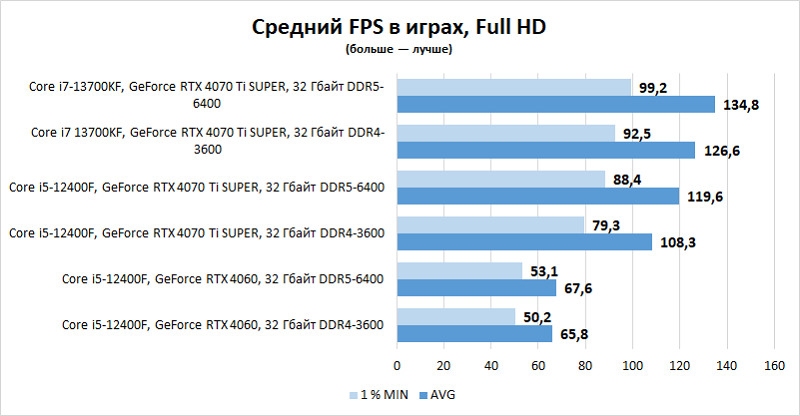
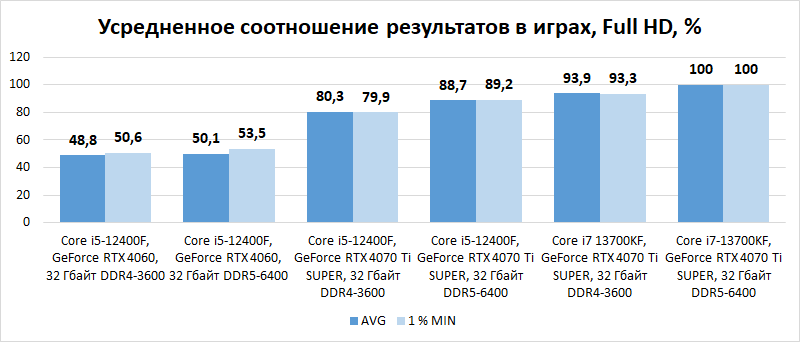
For added contrast, the RAM sets have been tweaked slightly: the DDR4 set is overclocked; DDR5 modules not only have higher frequencies, but also lower timings. But even so, we do not see a noticeable difference when using different standards of RAM – especially together with a GeForce RTX 4060-class video card. Therefore, buying a more expensive DDR5 kit and motherboard now will not give any dividends – they will appear only after an upgrade.
In particular, a system with Core i7-13700KF and DDR5 is on average 6-7% faster than the DDR4 platform in Full HD resolution. However, there are games in which the difference is much more noticeable: in Far Cry 6 it reaches 9%, in Baldur’s Gate III – 24%, in Cyberpunk 2077 – 20%, in The Witcher 3 – 10%. Over time, with the release of new games with increased system requirements, I believe this difference will become even lower.
As for the WQHD resolution, in this format the assemblies are even more aligned. We see that using a faster CPU produces better results than using a platform with DDR5 memory. So, when thinking about an upgrade, it is better to invest in a faster chip. In this case, more FPS and a generally smoother picture are provided by the P-core microarchitecture. For Core 13 and Core 14 chips, starting with the Core i5-13600KF model, this is Raptor Cove; The Core i5-12400F uses Golden Cove cores.
(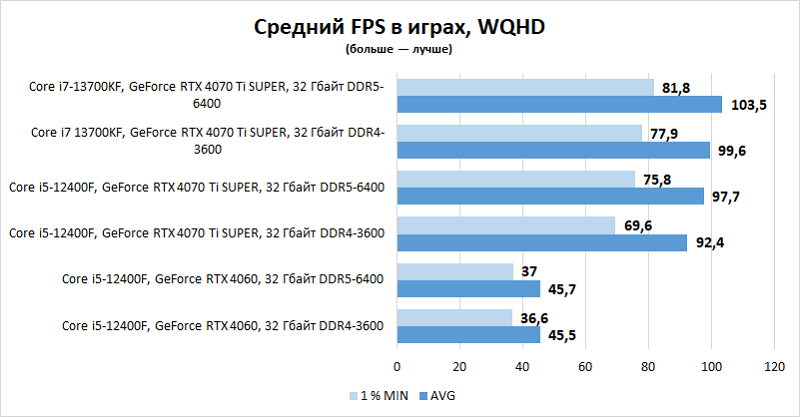
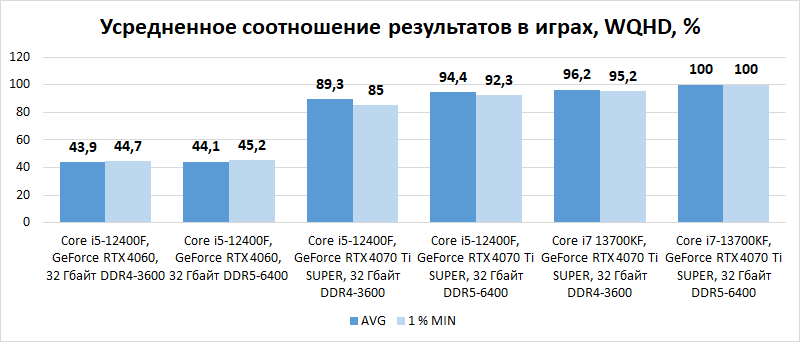
⇡#RAM upgrade
The question of choosing RAM is simple and complex at the same time. I know that some enthusiasts are really careful when choosing the right set of RAM: they look for modules with the right chips, overclock them, and adjust the timings as best they can. For such users and all sympathizers, we have published a large number of articles, comparisons and reviews. Most PC owners, according to my observations, buy a certain set of RAM, activate its profile in the BIOS and do nothing else with the memory. To paraphrase the words of a famous chef, let’s say it simpler: when it suits you, then it suits you. Therefore, if we talk about upgrading RAM, we need to solve only one global problem – to provide the system with a set of RAM of sufficient volume. Yes, volume is more important than frequency and timings.
In the article “Computer of the month, special issue. The end of an era: is it time to bury DDR4 memory and the gaming platforms that support it? The following experiment was considered: we took 18 games and used the maximum or close to it graphics quality – including using ray tracing, but without activating modern upscaling methods. The result is the maximum load rate recorded after 10 minutes of random gameplay. Among other programs, Steam clients, Epic Games Launcher, UBISOFT CONNECT and VK Play were active when launching games. It turned out that all 18 applications consumed more than 8 GB of RAM and six (including Windows, its services and game clients) exceeded the 16 GB mark. The record holder was Hogwarts Legacy, which “gobbled up” more than 20 GB of memory. At the same time, changing the resolution slightly changed the consumption of RAM, and the decrease in graphics quality did the same.
The conclusions suggest themselves: 16 GB is the minimum amount of RAM allowed in a gaming PC in 2024. It is possible to install more – install it. To date, five out of six “Computer of the Month” builds are equipped with RAM sets of 32 gigabytes or more. This volume is quite sufficient today and will be sufficient for the next few years.
I recommend reading the July issue of “Computer of the Month,” which is entirely devoted to choosing RAM for the AM4, AM5 and LGA1700 platforms.
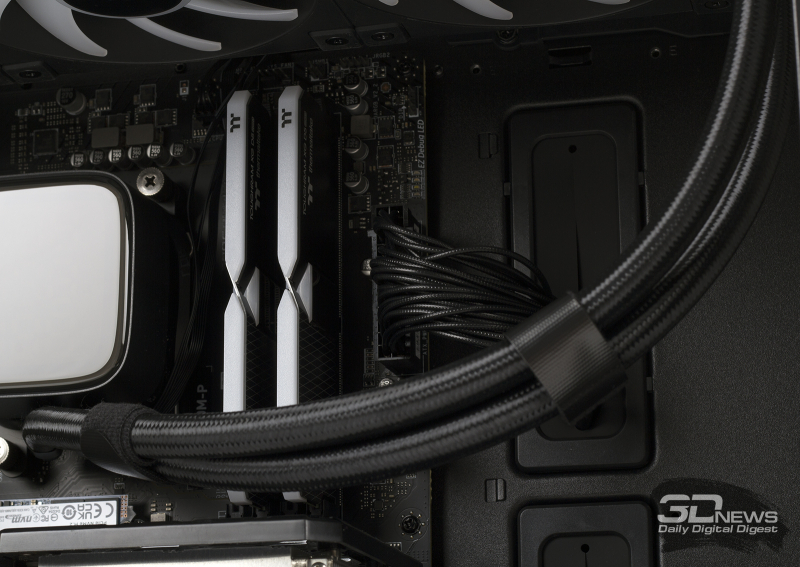
⇡#Best platform for upgrade
The best platform for upgrading a gaming PC here and now is, of course, AM5. Systems based on Ryzen chips and DDR5 RAM are distinguished by the following:
- Offer long-term support for the platform – at least one more generation of Ryzen processors will be released for AM5, but most likely more;
- X3D series models already offer the highest gaming performance;
- The power consumption of Ryzen 7000 and Ryzen 9000 crystals is generally lower than that of competitors, which simplifies the search for a motherboard for a subsequent upgrade;
- The AM5 platform does not require major investments in the purchase of high-frequency DDR5 RAM kits.
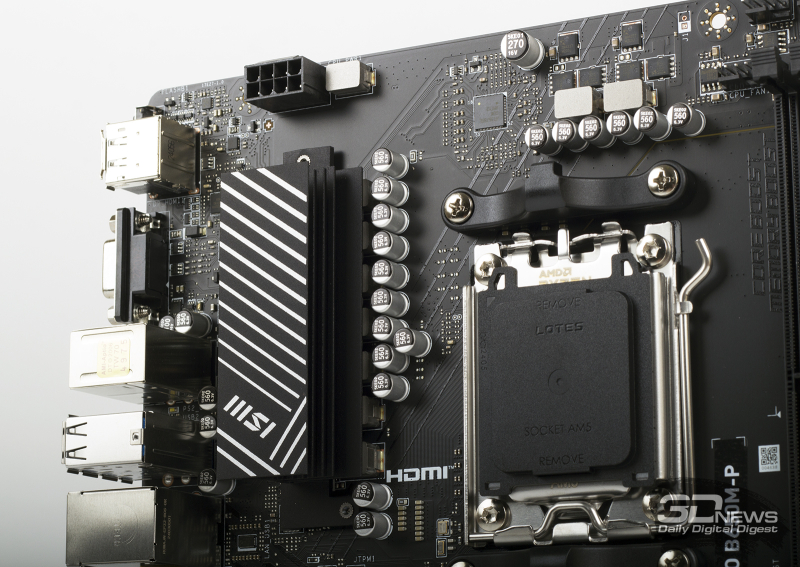
«The Reds have released controversial Ryzen 9000 series chips, and the new “gaming king” – the Ryzen 7 9800X3D – will soon go on sale. According to various sources, it will be 5-8% ahead of the Ryzen 7 7800X3D – however, such an insignificant difference will be achieved due to a serious increase in power consumption. The Ryzen 7 7800X3D boasts not only excellent gaming performance (on par with the Core i7-14700K and Core i9-14900K), but also a moderate energy appetite – even in work applications, the consumption of the eight-core does not exceed 90 W. Consequently, the pool of motherboards suitable for upgrading a system based on the AM5 platform is significantly increasing.
For this article, I ordered the MSI PRO B650M-P model from DNS – at the time of purchase it was the most affordable B650 board that supports Ryzen 7000 and Ryzen 9000 chips. For greater clarity, I tested it with the Ryzen 7 7700 chip in two modes – default and in head-on overclocking, since overclocking is blocked in X3D series chips. In the first case, the eight-core power consumption was 90 W, in the second – all 140 W.
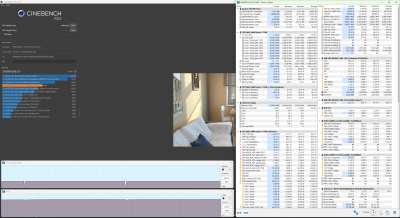
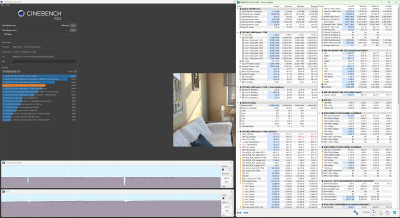
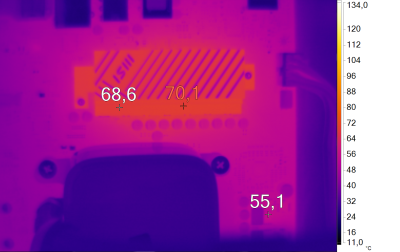
90 W

140 W
As you can see, the MSI PRO B650M-P handles the Ryzen 7 7700 in default mode. The area around the socket of the board noticeably heats up – up to 78 degrees Celsius, according to the built-in sensor. Interestingly, the system worked stably even after overclocking the chip – only the temperature of the power converter elements went beyond the psychological mark of 100 degrees Celsius. Therefore, we can only talk about the conditionally stable operation of the board and the computer as a whole. Personally, I wouldn’t risk using the system 24/7 with these settings and temperatures. Still, the Ryzen 7 7800X3D and other 90-watt AMD chips are the ceiling for the MSI PRO B650M-P, especially if you don’t plan to customize anything.
By the way, it is important to emphasize that any processor and video card can always be optimized to reduce power consumption – this applies to both AMD and Intel platforms. This issue is discussed in detail in the recently published article “Computer of the month, special issue: everything about setting up a gaming PC.” For example, using a tower cooler instead of a maintenance-free liquid cooler reduced the heating of the VRM zone at the hottest point by 9 degrees Celsius. Please note that results may vary for the better or for the worse depending on external factors and the performance of other components. For example, in “solid” computer cases in which the front panel does not have perforations, the VRM of any motherboard will heat up more. Video cards equipped with coolers with through-flow have a noticeable effect on the cooling of the space around the socket; a clear example will be given later. But in general, the recommendation sounds like this: if the power converter of your motherboard gets very hot, it is more rational to use a classic tower cooler in the assembly than a liquid cooler.
Often in the comments to this or that issue of “Computer of the Month” they ask the question: will cheap motherboards provide the same performance as more expensive options? A bad scenario is quite possible if:
- The board has strict, non-disabled restrictions on processor power consumption – illustrative examples are given in the article “Saving correctly: a review of the 8 cheapest Intel B660 motherboards”;
- The device BIOS is frankly truncated or poorly optimized – this also happens;
- Serious design mistakes were made in the development of the model or you encountered an outright defect – we swam, we know.
However, in some cases there is not much difference between inexpensive and expensive boards – not much difference in performance, of course. For example, it was not difficult for me to adjust the frequency and timings of the TeamGroup memory kit on both the PRO B650M-P and the ROG STRIX B650-A GAMING WIFI – with a threefold difference in the price of the devices. And it is obvious that the ASUS model has a number of advantages and advantages – this is an excellent basis for powerful assemblies based on Ryzen chips.
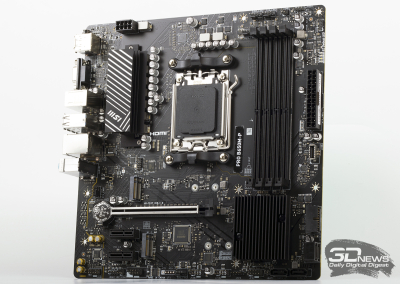
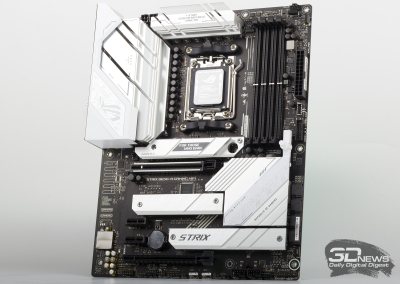
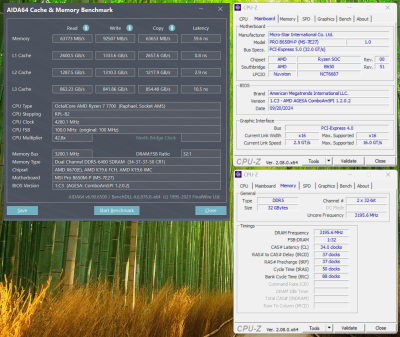
MSI PRO B650M-P
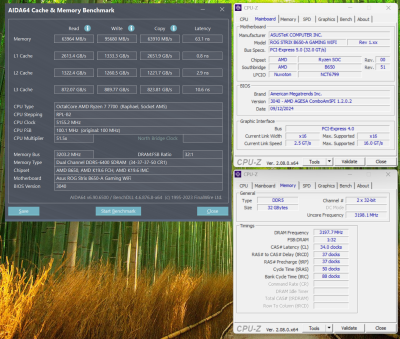
ASUS ROG STRIX B650-A GAMING WIFI
Below are the results of upgrading a typical AM5 build. Testing was carried out using the following equipment:
- AMD Ryzen 5 7500F and AMD Ryzen 7 7800X3D central processors;
- Motherboard MSI PRO B650M-P;
- RAM TeamGroup T-FORCE DELTA RGB FF3D532G6000HC38ADC01 (in DDR5-6400 mode (34-37-37-50));
- Palit GeForce RTX 4060 DUAL and ASUS ROG STRIX 4070 Ti SUPER OC video cards;
- Intel SSDPEKKW020T8X1 SSD;
- Power supply DEEPCOOL PX1000G;
- Maintenance-free DEEPCOOL LD360.
(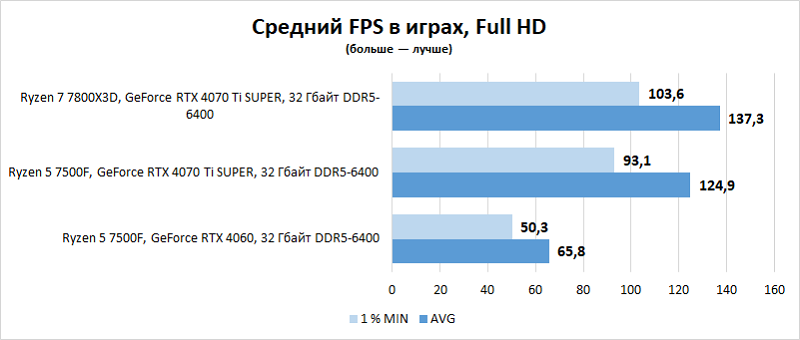

(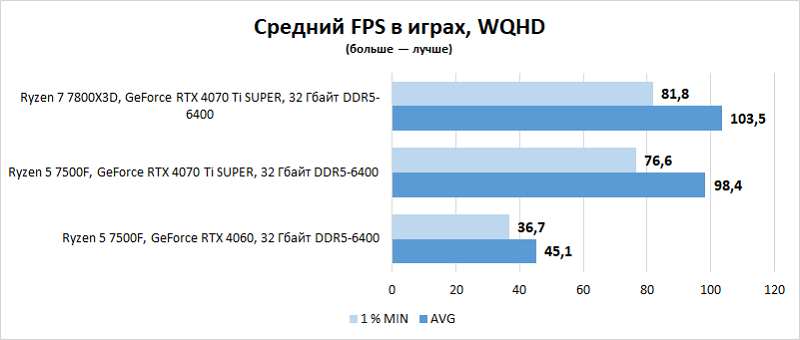
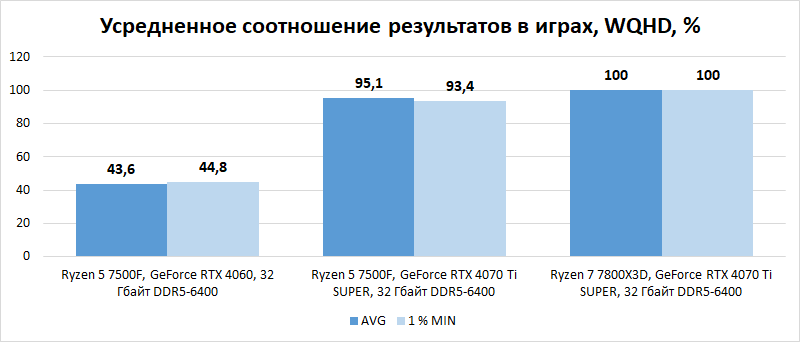
⇡#Conclusions
So, let’s summarize and present the main theses and ideas that were obtained as a result of this research:
- There is a point in upgrading system units that were 7-8 years old;
- The easiest way to prepare a computer for an upgrade is not to skimp on components;
- A good power supply, case and processor cooling system will survive more than one upgrade;
- Gaming builds based on the AM4 and LGA1700 platforms will be in demand for a long time;
- Assemblies based on the LGA1700 platform with DDR4 memory are still quite relevant;
- When upgrading RAM, the most important parameter is its volume;
- The best modern platform for an upgrade is AMD AM5.